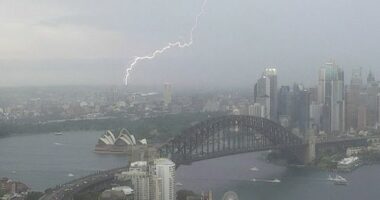Share this @internewscast.com

Australian home prices have continued to rise, reaching a new record high last month, amid falling interest rates.
While all capital cities saw prices increase in May — with Sydney, Brisbane, Adelaide, Perth and Darwin all now at price peaks — Melbourne had the strongest monthly rise of 0.79 per cent, according to PropTrack’s latest Home Price Index.
The report, released this week, states national home prices lifted 0.39 per cent — the fifth consecutive month of growth — meaning they’re up 4.12 per cent year-on-year.
“With interest rates falling, price momentum has increased and broadened, with all capitals seeing prices lift in May,” REA Group Senior Economist and report author Eleanor Creagh said.
“Home price growth in major cities is becoming more aligned. Melbourne, which was previously behind other capitals, is now experiencing an increase in home prices.”
Melbourne is continuing to recover after a “prolonged period of softer growth”, the report says, with the median home value sitting at $782,000. However this remains 2.85 per cent below the city’s peak. It was also the only capital city to record a drop (-0.38 per cent) in year-on-year home prices in May.
Meanwhile, Perth’s median home value was $787,000 — representing the first time in a decade that it has overtaken Melbourne. Perth had a monthly rise of 0.27 per cent, while Brisbane lifted 0.24 per cent.
“Cities such as Perth and Brisbane are now seeing growth moderate after strong outperformance. The growth seen in all capital cities is underpinned by improved buyer sentiment and renewed confidence following interest rate cuts,” Creagh said.
Along with Melbourne, Adelaide and Sydney led the monthly rises, at 0.52 and 0.39 per cent.
Outside the capital cities, regional prices rose 0.25 per cent, according to the report, with annual growth of 5.19 per cent outpacing the combined capitals (3.71 per cent).
“With further price increases and rate cuts expected, prospective buyers are moving off the sidelines and accelerating their purchasing decisions.”
OECD downgrades economic growth forecast
Meanwhile, the Organisation for Economic Cooperation and Development (OECD) warned Australia to boost housing supply and address falling affordability as it revealed a downgrade to its economic growth forecast for 2025.
It said Australia’s gross domestic product would grow at 1.8 per cent this year, down 10 basis points from its prediction in March, as United States President Donald Trump’s tariffs hit demand for Australian exports — especially if China experiences a marked slowdown.
The organisation downgraded its global growth forecasts from 3.1 per cent to 2.9 per cent this year.
Meanwhile, economic growth is projected to rise to 2.2 per cent in the coming year, up from earlier forecasts, aligning with the OECD’s estimation of Australia’s economic potential.”
The OECD’s forecast for 2025 is lower than the Reserve Bank’s estimate of 2.1 per cent but in line with its 2026 prediction.
Inflation will remain close to target, averaging 2.3 per cent over 2025 and 2026, the OECD projected.
That’s below RBA estimates, which predict headline inflation accelerating to 3.1 per cent by the end of the year. The OECD said the central bank would be warranted to continue easing interest rates, but must be nimble to change path in case of unexpected external shocks.
Looking ahead, Creagh warned to expect further home price growth throughout the year.
“While stretched affordability will remain a constraint, a chronic lack of new housing supply, population growth, and targeted buyer incentives are expected to keep upward pressure on prices,” Creagh said.
“In combination with interest rates continuing to move lower, these factors are likely to drive further price growth throughout the remainder of 2025.”
— With additional reporting by the Australian Associated Press.














